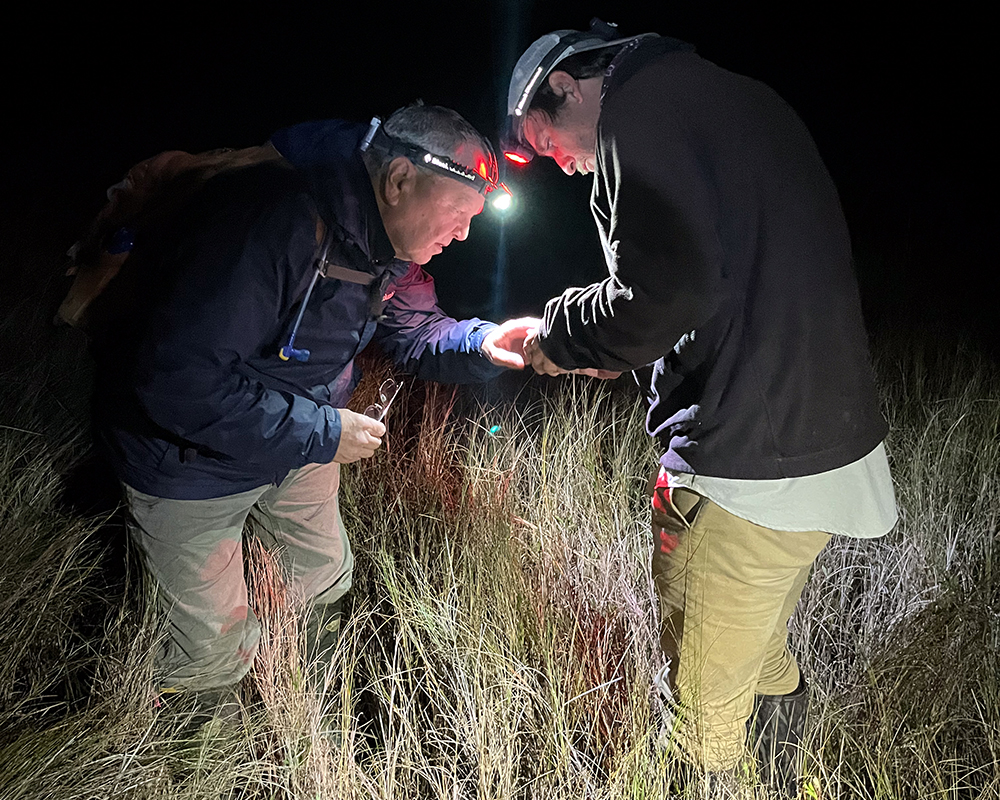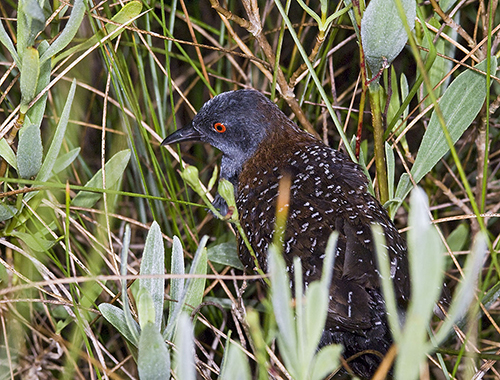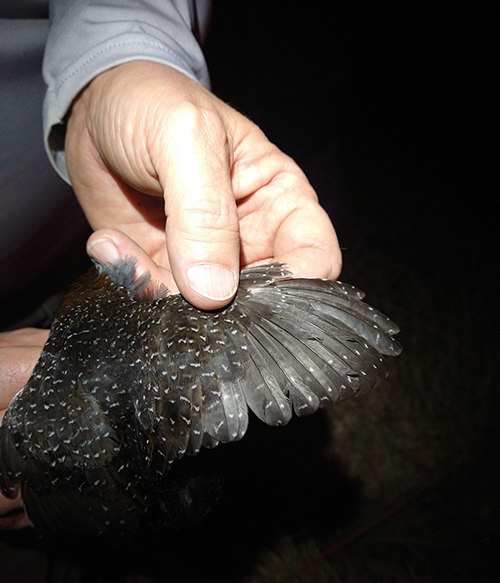Marsh mystery: MSU experts study elusive bird to properly manage land

Contact: Meg Henderson
STARKVILLE, Miss.—Deep in the difficult terrain of the Gulf Coast high marsh lives a tiny, dark and white-speckled bird called the black rail. These elusive birds that make their homes near muddy waters and among sharp-bladed grasses are easier to hear than see. Yet to catch their distinct sound “kick-ee-kerr” is a rare experience.

Black rails, along with high marsh-dwelling yellow rails and mottled ducks, are at the heart of the National Oceanic and Atmospheric Administration Firebird project, a coastal conservation initiative co-led by Mississippi State University scientist Mark Woodrey.
Woodrey, an avian ecologist in the university’s Mississippi Agricultural and Forestry Experiment Station, has spent years studying coastal wetlands and secretive marsh birds. The concept of the study began to take root when Woodrey, based at MSU’s Coastal Research and Extension Center in Biloxi, received calls from land managers from across the Gulf Coast.
“A lot of people were worried that they could no longer use prescribed burns in these high marsh areas because the black rail was being considered for listing as a threatened species by the U.S. Fish and Wildlife Service,” Woodrey said. “I realized there was a lot of misinformation circulating and little to no scientific data to inform stakeholders.”
Co-principal investigator and former MSU postdoctoral researcher Auriel Fournier—also director of the Forbes Biological Station with the Illinois Natural History Survey—assembled a team with Woodrey. After applying for a $3.9 million grant for a five-years study, the project, which began in 2020 and spans the Gulf Coast from Tampa Bay, Florida to the Laguna Madre of Texas, encompasses a team of 33 individuals from six academic institutions; conservation nonprofits such as Ducks Unlimited, Audubon Delta and Tall Timbers Research Station; and federal agencies including the U.S. Fish and Wildlife Service, U.S Geological Survey and NOAA.
The team merged their combined expertise in biology, ecology, climate science and modeling to produce data that would answer these substantial conservation concerns and guide management practices.
“Throughout the study, we’ve used the concept of adaptive management as our North Star,” Woodrey said. “This is a quantitative, rigorous approach to making conservation-based land management decisions, examining the process and continuing to research and modify recommendations according to the latest data.”
High marsh, a unique coastal tidal habitat which floods infrequently, is home to many endangered plant species and is favored by black and yellow rails and mottled ducks. The Gulf of Mexico is home to 62% of the tidal marshes in the U.S.

“Texas and Florida have solid data on black rails, so we know that they nest there, but there is very little actual data on the birds in Louisiana, Mississippi and Alabama,” said Woodrey, who also is an associate research professor in MSU’s Department of Wildlife, Fisheries and Aquaculture.
To help the team locate sampling sites in these uncharted areas, Woodrey turned to colleague Kristine Evans, associate professor of conservation biology in MSU’s wildlife, fisheries and aquaculture department. Evans and USGS staff used remote sensing technology to create maps of high marsh areas along the Gulf Coast where field studies would be conducted.
Each state has a fieldwork team. MSU research associate Blake Lamb coordinates the Mississippi-Alabama team, leading survey efforts and training new technicians on identifying birds and showing the group how to conduct field studies.
“During the breeding season—mid-March through July—we conduct call-broadcast surveys. We play their calls, and listen for them to call back,” Lamb said. “We also survey during the winter to count migratory birds, but we use different methods.”
Another study component addresses managers’ concerns that shifting weather patterns caused by climate change constrain their ability to conduct prescribed fires. These burns may take place only when winds blow from the north—sending particulate matter out to the Gulf, away from populated areas. This part of the research, published in Remote Sensing and Environment and Geocarto International, found that weather patterns have not changed significantly in recent years.
From the beginning, stakeholders have played a critical role in the study.
“I’ve always worked with end-users and try to involve them upfront,” Woodrey said. “They urged us to do the study because data-informed management practices for these habitats didn’t exist.”
This spring, Woodrey will meet with NOAA representatives and land managers for a review of the team’s progress. The researchers are hopeful the project can be expanded past the 2025 completion date.
“Our stakeholders need longer-term data sets to make the most informed decisions,” Woodrey said. “We’d like to continue collecting data from field studies, and we want to study the impact of coastal squeeze on these marsh-dwelling birds. As sea levels rise on one end and human development expands upslope, existing marsh areas are shrinking. We also plan to add a social science component to study people’s perceptions on prescribed fire and develop extension materials to educate end-users.”
“In many ecosystems, fire is natural and needed, and in the past, lightning strikes would do the job,” Lamb added. “Today, we have to manage fire in a way that doesn’t affect civilization, and the more data and better data we have, the more effectively we can do that.”
To learn more about the NOAA Firebird project, visit https://noaafirebird.home.blog. To learn more about the Mississippi Agricultural and Forestry Experiment Station, visit www.mafes.msstate.edu.
Mississippi State University is taking care of what matters. Learn more at www.msstate.edu.